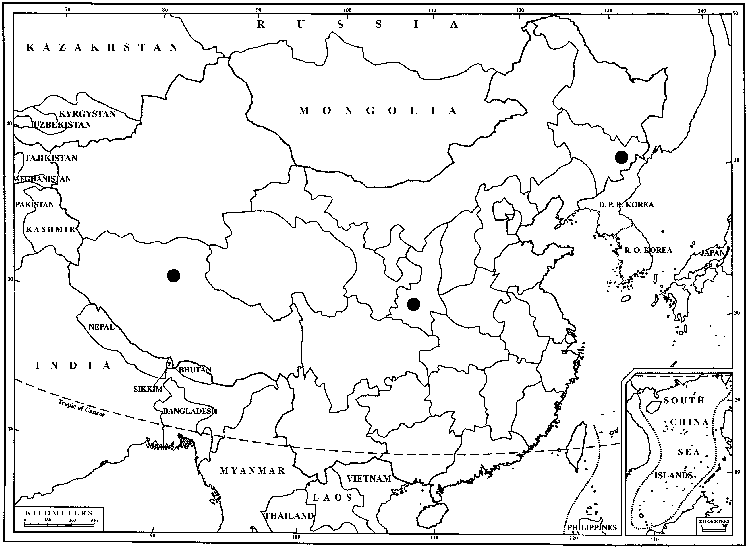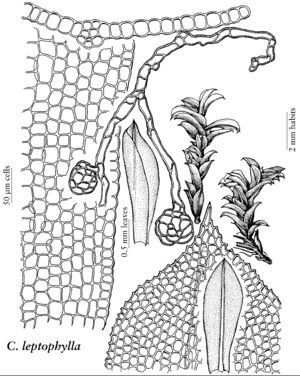Difference between revisions of "Chenia leptophylla"
Bull. Buffalo Soc. Nat. Sci. 32: 258. 1993,.
FNA>Volume Importer |
FNA>Volume Importer |
||
| Line 13: | Line 13: | ||
|name=Chenia rhizophylla | |name=Chenia rhizophylla | ||
|authority=(Sakurai) R. H. Zander | |authority=(Sakurai) R. H. Zander | ||
| − | }}{{Treatment/ID/Synonym | + | }} {{Treatment/ID/Synonym |
|name=Tortula rhizophylla | |name=Tortula rhizophylla | ||
|authority=(Sakurai) Z. Iwatsuki & K. Saito | |authority=(Sakurai) Z. Iwatsuki & K. Saito | ||
| − | }}{{Treatment/ID/Synonym | + | }} {{Treatment/ID/Synonym |
|name=Tortula vectensis | |name=Tortula vectensis | ||
|authority=E. F. Warburg & Crundwell | |authority=E. F. Warburg & Crundwell | ||
| Line 33: | Line 33: | ||
|elevation=low to high elevations (0-200 m) | |elevation=low to high elevations (0-200 m) | ||
|distribution=Ala.;La.;N.Mex.;Mexico;South America (Bolivia;Brazil);Europe;s Africa;Australia;Pacific Islands (Hawaii). | |distribution=Ala.;La.;N.Mex.;Mexico;South America (Bolivia;Brazil);Europe;s Africa;Australia;Pacific Islands (Hawaii). | ||
| − | |discussion=<p>Chenia leptophylla is one of a mundivagant group that is apparently distributed in association with human activities (P. M. Eckel 1986). The small brood bodies on rhizoids in the soil seem to be the agency for asexual reproduction. The very thin-walled distal laminal cells may appear bright yellow-green in KOH, but examination under the compound microscope reveals brick red walls. The elongate, thick-walled, reflexed cell forming the leaf apiculus is unique and immediately diagnostic.</p> | + | |discussion=<p><i>Chenia leptophylla</i> is one of a mundivagant group that is apparently distributed in association with human activities (P. M. Eckel 1986). The small brood bodies on rhizoids in the soil seem to be the agency for asexual reproduction. The very thin-walled distal laminal cells may appear bright yellow-green in KOH, but examination under the compound microscope reveals brick red walls. The elongate, thick-walled, reflexed cell forming the leaf apiculus is unique and immediately diagnostic.</p> |
|tables= | |tables= | ||
|references= | |references= | ||
| Line 56: | Line 56: | ||
|publication year= | |publication year= | ||
|special status= | |special status= | ||
| − | |source xml=https://jpend@bitbucket.org/aafc-mbb/fna-data-curation.git/src/ | + | |source xml=https://jpend@bitbucket.org/aafc-mbb/fna-data-curation.git/src/8f726806613d60c220dc4493de13607dd3150896/coarse_grained_fna_xml/V27/V27_933.xml |
|subfamily=Pottiaceae subfam. Pottioideae | |subfamily=Pottiaceae subfam. Pottioideae | ||
|genus=Chenia | |genus=Chenia | ||
Revision as of 16:58, 18 September 2019
Stems seldom branching; rounded in transverse section; rhizoids usually few. Leaves ligulate to elliptic, apex acute or rounded acute and apiculate with an elongate, brownish, thick-walled cell, costa percurrent or subpercurrent; proximal laminal cells ca. 20–25 µm wide, 2–4:1. Brood bodies sometimes present, borne on rhizoids in soil, clavate, ca. 100–130 µm. Sporophytes not known from North America.
Habitat: Found on bare soil in disturbed, open areas
Elevation: low to high elevations (0-200 m)
Distribution

Ala., La., N.Mex., Mexico, South America (Bolivia, Brazil), Europe, s Africa, Australia, Pacific Islands (Hawaii).
Discussion
Chenia leptophylla is one of a mundivagant group that is apparently distributed in association with human activities (P. M. Eckel 1986). The small brood bodies on rhizoids in the soil seem to be the agency for asexual reproduction. The very thin-walled distal laminal cells may appear bright yellow-green in KOH, but examination under the compound microscope reveals brick red walls. The elongate, thick-walled, reflexed cell forming the leaf apiculus is unique and immediately diagnostic.
Selected References
None.
